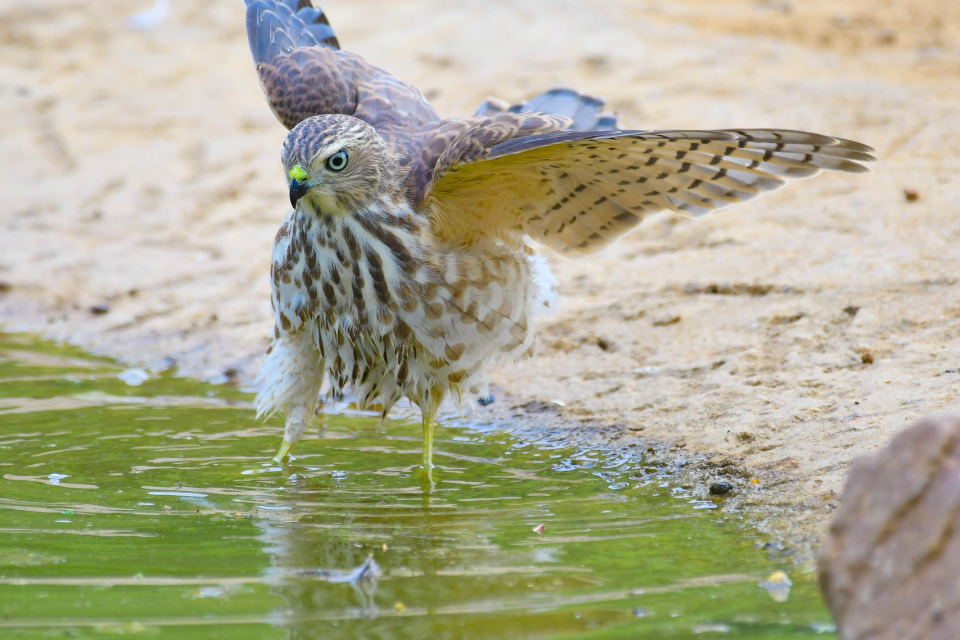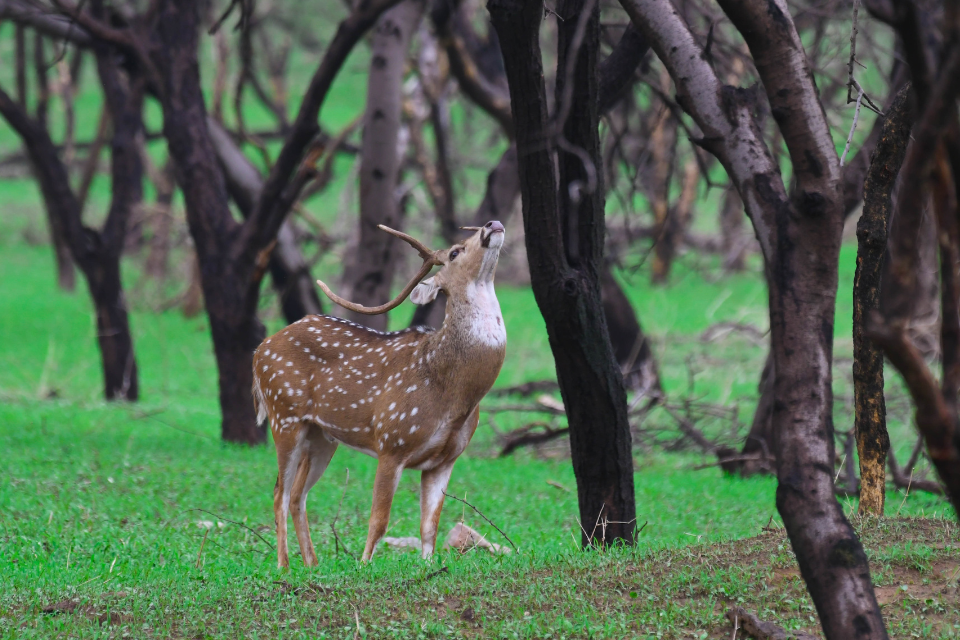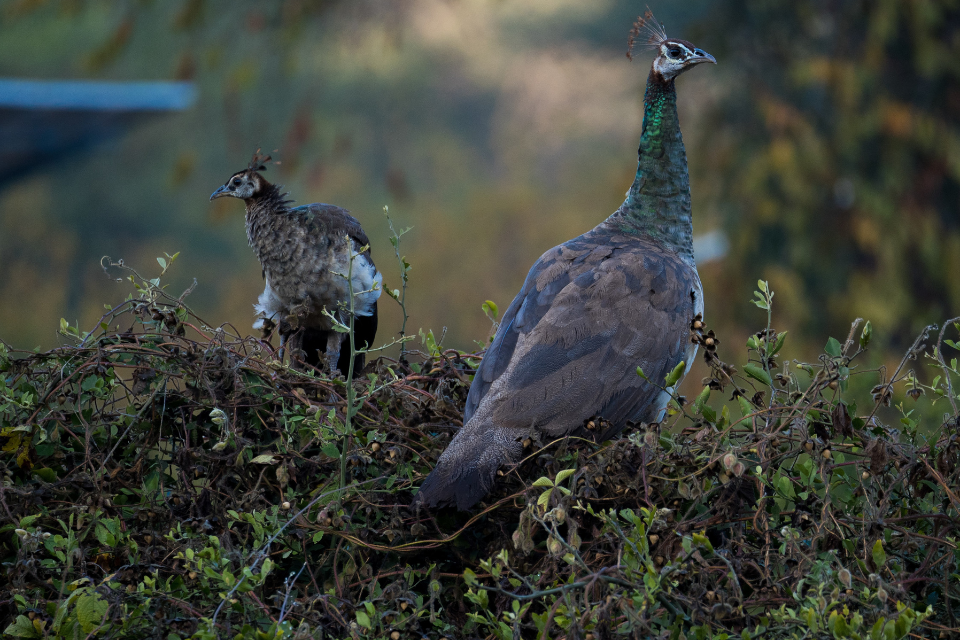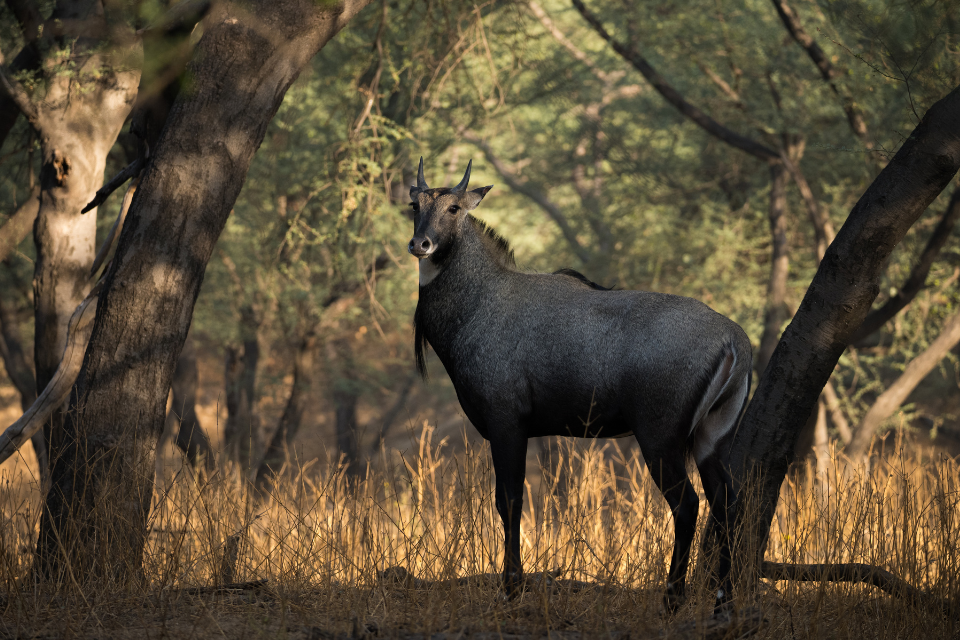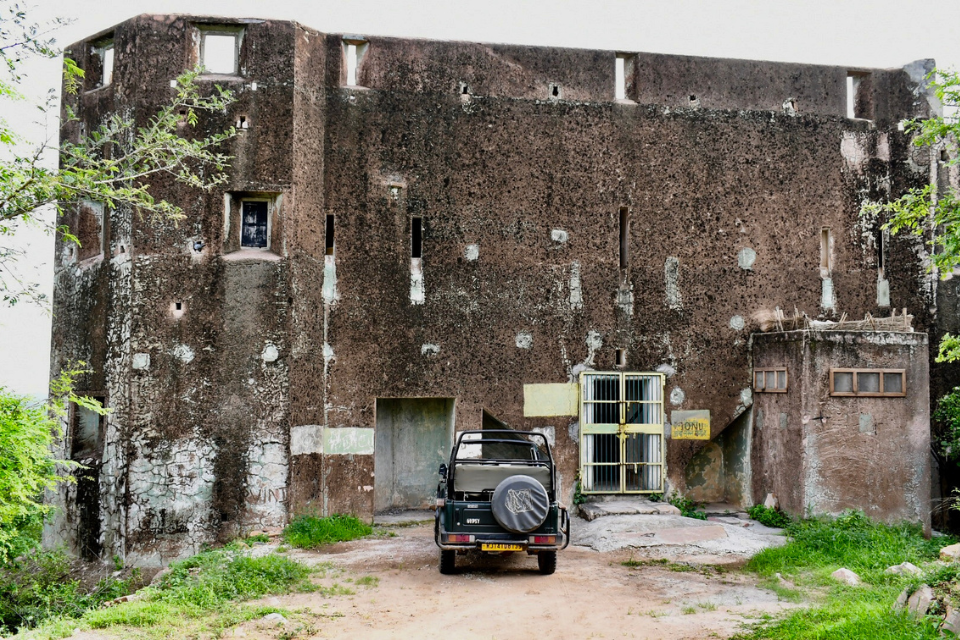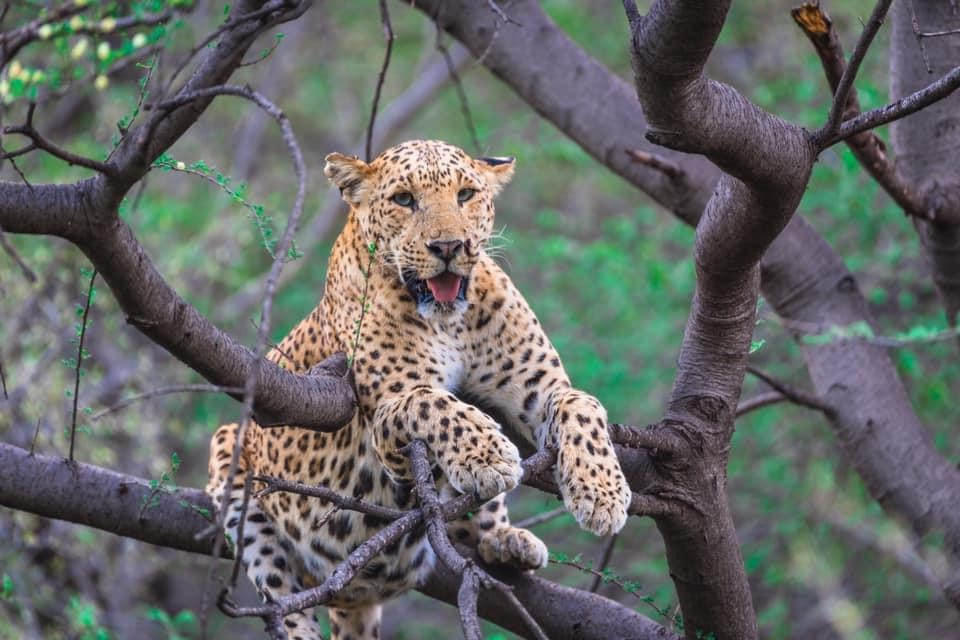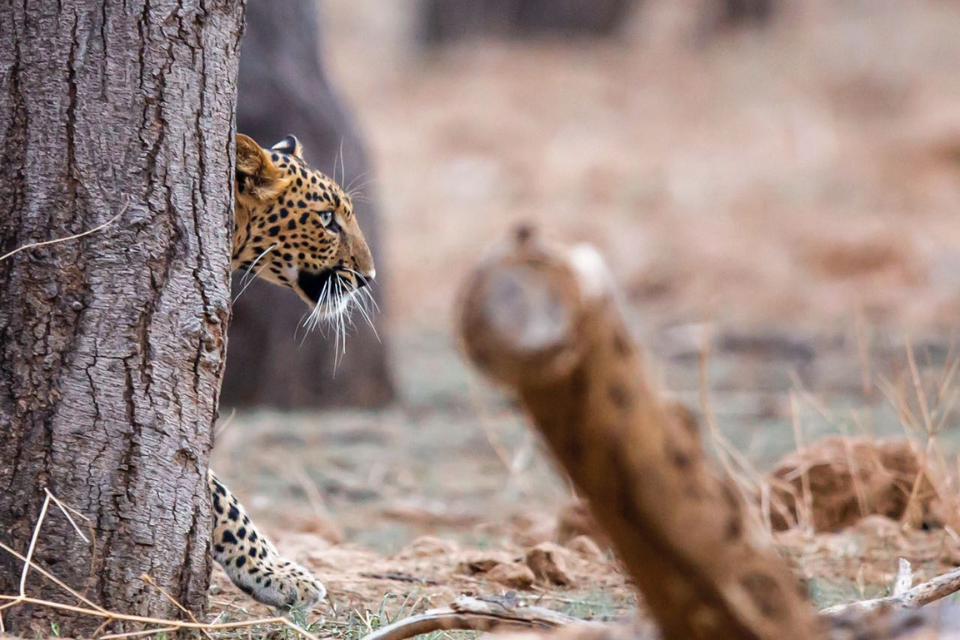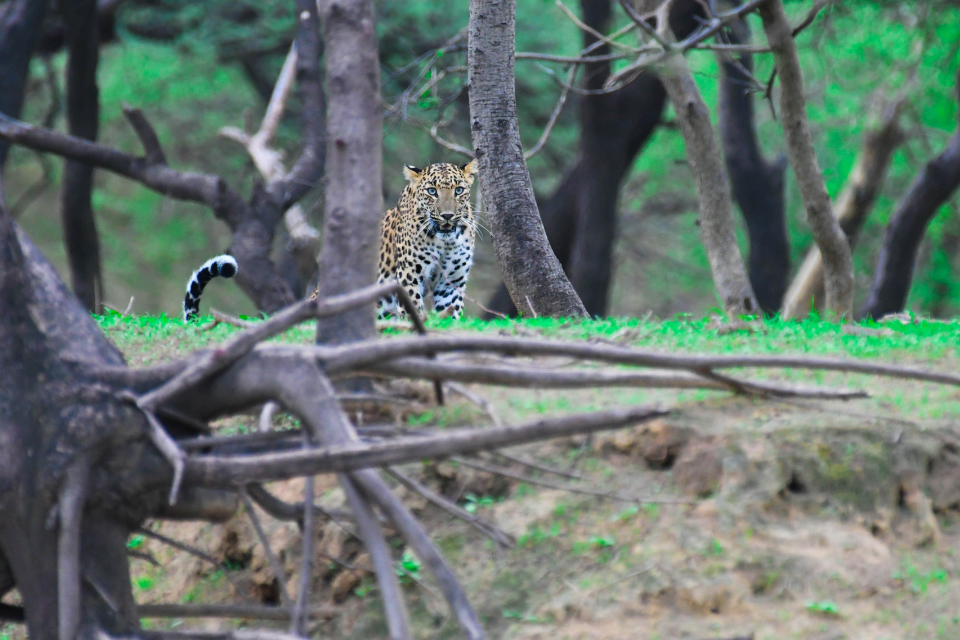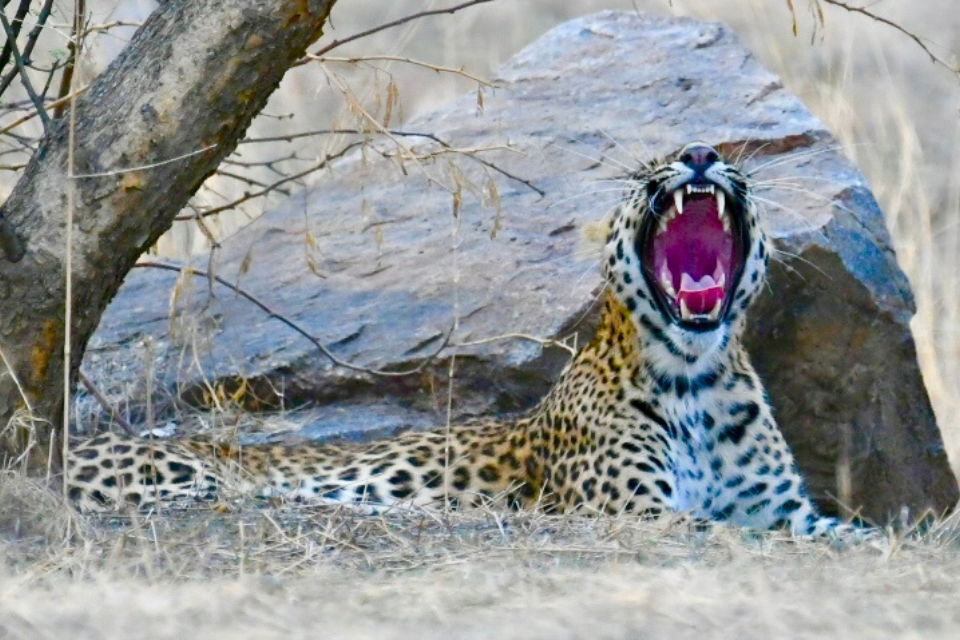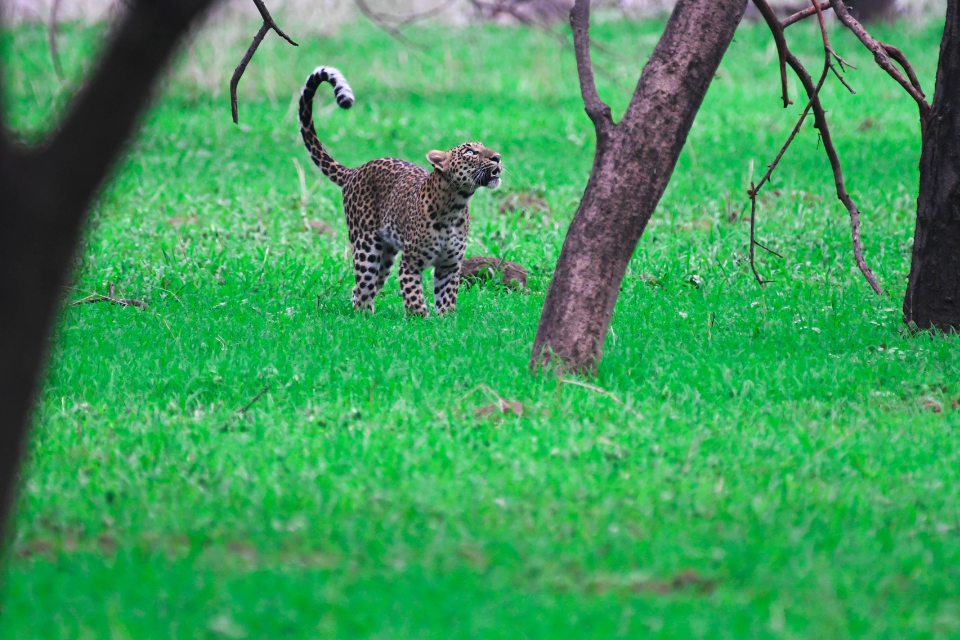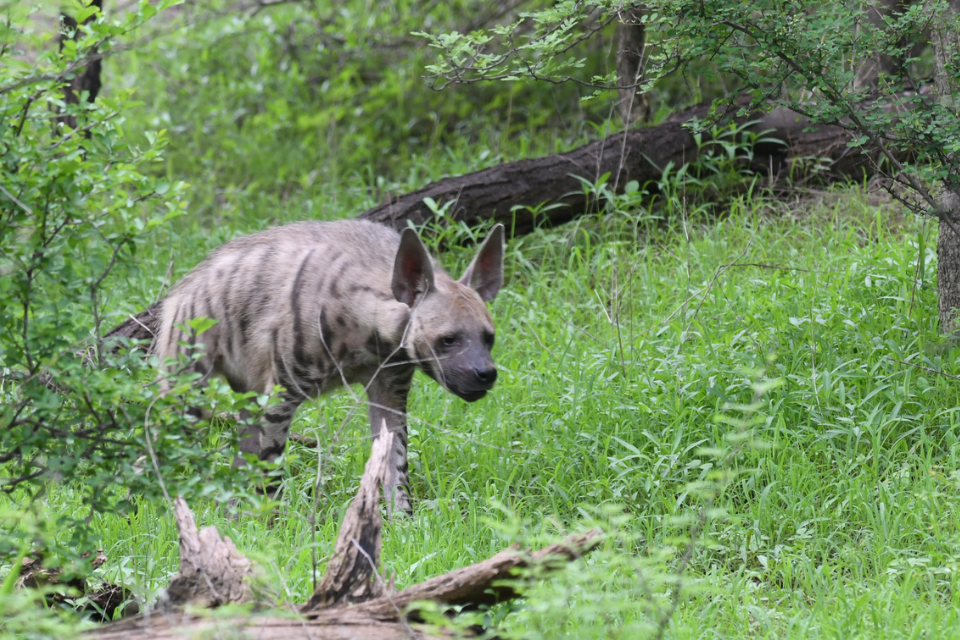- September 20, 2025
Top 5 Lesser-Known Jhalana Wildlife—From Civets to Hyenas
Introduction: Jhalana, Jaipur’s wild heart (that’s not just leopards)
When people think of Jhalana Leopard Reserve in Jaipur, the first image is—surprise—leopards. And fair enough: this 17–20 sq km patch of Aravalli scrub-forest became India’s first dedicated leopard reserve in 2017 and sits almost inside the city limits. But look beyond the headline cat and you’ll find a cast of fascinating, low-profile creatures that thrive in Jhalana’s dry deciduous ridges, gullies and grass patches. Think civets slinking through tree canopies, striped hyenas patrolling at night, desert foxes ghosting the scrub, jungle cats flicking through grass, and porcupines leaving quill-lined calling cards.
Jhalana’s mosaic habitat and proximity to Jaipur make it an unusual urban-wild interface. A 2024 study notes the reserve spans roughly 17–20 sq km and was formally designated a leopard reserve in 2017—small, but rich in biodiversity.
Multiple official and operator pages also confirm that, besides leopards, striped hyenas, Indian (palm) civets, desert foxes, jungle cats and porcupines are among the residents—precisely the five “under-the-radar” stars we’re exploring today.
1) Indian Palm Civet (Paradoxurus hermaphroditus): the night gardener
Why it’s special: The Indian (a.k.a. Asian) palm civet is a nocturnal omnivore that plays a surprisingly big role in forest health. It gorges on fruits (figs are a favourite), insects and the odd small vertebrate, dispersing seeds across the habitat—basically a sneaky, stripe-backed gardener. In Jhalana, civets are reported by guides and on reserve profiles, but they’re rarely seen on standard day safaris; early dawn or late dusk edges give you your best chance.
ID tips: Stocky, cat-sized body; masked face; three faint stripes along the back; long, muscular tail. Look for eye-shine in trees, scratchy movement on trunks near waterholes, or fruiting fig trees.
Conservation note: The IUCN status is Least Concern, but local pressures (habitat fragmentation, traffic at urban edges) can affect encounter rates.
Where to look in Jhalana: Quiet, rocky gullies with mature fig or jamun and dense thorn, especially on the margins where human disturbance is lower.
Photographer’s tip: If you have a permitted night/early-dawn slot, set ISO high (3200–6400), use a fast prime (f/1.8–f/2.8), and pre-focus on likely tree trunks or low boughs near fruiting trees.
2) Striped Hyena (Hyaena hyaena): the shy cleanup crew
Why it’s special: Often misunderstood, the striped hyena is primarily a scavenger, performing a vital clean-up service by consuming carrion and organic waste that would otherwise spread disease. In Jhalana and the broader Jaipur Aravalli belt, hyenas are resident but elusive; you’re more likely to find tracks (pugmarks), scat, or hear their calls than to get a daytime visual. Still, predawn and post-sunset transitions sometimes deliver fleeting sightings near rocky outcrops and old trails. Reserve and field reports list hyenas among Jhalana’s carnivores.
ID tips: Sloped back, erect mane that can “puff,” bold side stripes, and a confident, loping walk.
Conservation note: The species is globally Near Threatened with a decreasing trend; persecution and habitat loss are key threats—another reason to celebrate every encounter.
Where to look in Jhalana: Rocky ridges and quiet tracks with less vehicle pressure. Scan for fresh scat with bone fragments—hyenas crunch bones for minerals.
Photographer’s tip: If you’re lucky enough to see one at dawn, avoid a harsh flash. Try shutter ≥1/800 with moderate ISO and brace for low light.
3) Desert Fox (commonly “Indian/Bengal Fox,” Vulpes bengalensis): the crepuscular whisper
Why it’s special: In local safari chatter you’ll hear “desert fox” used broadly, but in the Jaipur landscape most “fox” sightings refer to the Bengal (Indian) fox—a small, elegant canid with a fantastically bushy, black-tipped tail. It patrols open scrub and grass, picking insects, rodents, eggs and wild fruit. Operators and local pages include “desert foxes” in Jhalana’s fauna lists, and the Bengal fox itself is widespread in Rajasthan’s semi-arid zones.
ID tips: Slender, long legs, pointy ears and that signature plume-tail with a black tip.
Conservation note: The IUCN lists the Bengal fox as Least Concern, but habitat degradation and roadkill around urban edges can bite; some studies highlight vulnerability to landscape change.
Where to look in Jhalana: Open scrub flats and early-morning tracks. Scan gently undulating grass with binoculars just after sunrise or in the last light before gate-out.
Photographer’s tip: Low-angle shooting from a seated position (wherever allowed) with a 300–400mm lens yields intimate portraits; stay ethical and give space.
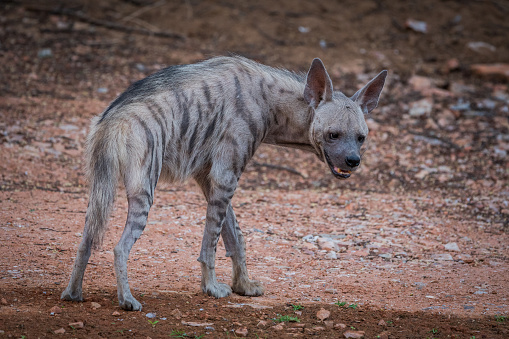
4) Jungle Cat (Felis chaus): the grass-edge specialist
Why it’s special: Often mistaken for a “large house cat,” the jungle cat is a capable mid-sized predator of rodents, birds and reptiles. It loves grass-edge habitat near water, but in semi-arid reserves like Jhalana it also hunts along scrubby drainages and small grass clearings. The reserve’s official/guide pages list jungle cats as regular co-stars. Globally the species is Least Concern, but local trends vary by region.
ID tips: Long legs, plain sandy coat, faint leg stripes, tufted ears (small), and a shortish tail with a dark tip and bands.
Where to look in Jhalana: Edges of nallahs and grass patches. Watch for sudden grass movement in the golden hour—and for tiny “pounce” postures.
Photographer’s tip: Continuous-AF and 1/1250–1/2000 for pounce sequences; even a “common” behavior (like a tall-grass scan) makes for a compelling frame in side-light.
5) Indian Crested Porcupine (Hystrix indica): the midnight engineer
Why it’s special: If you’ve ever found quills on a track in Jhalana, you’ve met the night shift. The Indian crested porcupine is a robust, nocturnal herbivore that digs, aerates soil, disperses seeds (by forgetting caches) and recycles minerals by gnawing bones for calcium—ecosystem engineering at porcupine scale. Jhalana’s fauna lists include porcupines, and guides often note fresh dig signs near scrub edges after rain. Globally, the species is Least Concern on the IUCN Red List.
ID tips: Heavy body, strong digging claws, and that dramatic black-and-white crest of quills that rises when alarmed.
Where to look in Jhalana: Sandy banks and burrow mouths along quiet tracks, plus waterholes after dusk (on permitted drives).
Photographer’s tip: If you encounter one at night (on authorised slots), resist flash bursts. Use higher ISO and let the guide’s light (if any) fall indirectly; back off if the animal bristles.
When & where to look in Jhalana (and how to do it right)
Best windows: Early mornings and late afternoons are universally productive for crepuscular species like foxes and cats; civets and porcupines skew later into the night, while hyenas patrol the dark but can return to den areas near dawn. Keep your expectations humble: these are shy, low-visibility animals.
Habitat hotspots (general):
- Rocky ridges & drainages for striped hyena sign.
- Open scrub/grass for fox and jungle cat movement.
- Fruit trees & dense thorn for civets; sandy banks for porcupine dig sites.
Why Jhalana is uniquely suited: Compact, urban-edge reserves can concentrate sightings, but they also concentrate pressures. Jhalana’s small size (17–20 sq km) and mosaic of dhok and associated dry-deciduous flora provide enough niches for a surprising range of mammals, reptiles and >200 bird species.
Responsible safari etiquette (read this, wildlife will thank you)
- Silence sells sightings: Keep voices low; avoid sudden movement.
- Stay on tracks: Off-roading crushes burrows and grass mats used by foxes and cats.
- Lights with care: No spotlights unless allowed; never harass nocturnal animals.
- Zero food toss: Food habituation kills—directly or indirectly.
- Respect sightings: If a vehicle crowd forms, request a rotation so everyone gets a turn without boxing animals in.
Quick gear & settings cheat-sheet
- Lenses: 300–500mm for mammals; a 70–200mm for environmental portraits.
- Shutter: 1/1000 for movement; 1/250–1/500 for static portraits in good light.
- ISO: Don’t fear 3200–6400 in low light; noise beats blur.
- Focus: Use back-button AF (AI-Servo/AF-C) and keep the point on the eyes.
- Bonus: Pack compact binoculars (8×32) for scanning grass edges.
FAQs
Q1) Is Jhalana only about leopards?
Not at all. The reserve is best known for leopards, but striped hyenas, civets, foxes, jungle cats and porcupines are all documented residents. Guides routinely mention them in species lists, though sightings are rarer than leopard encounters.
Q2) What’s the best season for these five?
They’re year-round, but visibility peaks when grass is shorter and water is concentrated—typically late winter to early summer, and again after monsoon once undergrowth settles. Civil twilight slots help with civets/porcupines; dawn helps with hyenas returning to den zones. (Seasonal vegetation context for Jhalana’s dry-deciduous character comes from recent research.)
Q3) Are striped hyenas dangerous?
They’re shy and mostly nocturnal scavengers. Conflicts are rare in protected settings if people keep distance and follow rules. Globally they’re Near Threatened, so the priority is non-disturbance and habitat protection.
Q4) I saw a “desert fox”—was that the Bengal (Indian) fox?
Most likely yes in Jaipur’s semi-arid landscape. Local pages list “desert foxes” for Jhalana, and the Bengal fox is the common small fox in Rajasthan’s scrub. Either way, give it space and avoid baiting or calls.
Q5) Are civets and porcupines protected?
Yes—India’s wildlife laws protect native mammals. On the global scale both palm civets and Indian crested porcupines are Least Concern, but that’s not a license for disturbance; urban encroachment still hurts.
Q6) How big is Jhalana and when did it become a leopard reserve?
It covers roughly 17–20 sq km and was officially notified as a Leopard Reserve in 2017.
Disclaimer All images used in this blog are either sourced from public domain or credited to their respective owners. If you are the copyright holder of any image and wish to request its removal or proper attribution, please contact us at [email protected]




